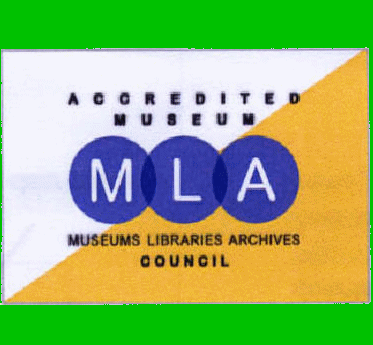What’s On at The Met
4th Mar at 19:30 live music with Bronwen £22
9th Mar at 13:00 a lunchtime play : Launderette £6
11th Mar at 10:30 YouTube workshop £8
17th Mar at 19:30 Rock band ‘Man’ £17
22nd-25th Mar a junior production of ‘Moana’ £10
28th Mar – 1st April at 19:00 ‘Calendar Girls’ £12
For more information Click Here or tel 01495 533195
Museum opening times
The Museum is open to the public, free of charge:
Thursday* to Saturday 10am – 1pm
Royal Mail Stamps
A new set of commemorative stamps is being launched on 9th March featuring historic trains such as the 100 year old Flying Scotsman. This set will be unique in as much that it will be the last commemorative set to feature HM Queen Elizabeth II.
February 100 Club
This month’s prize numbers were drawn by two young visitors on a Pokemon hunt and the lucky winners are:-
No 54 Gareth Murphy £20
No 67 Sharon Saunders £10
If you would like to join our 100 club and be in with a chance of winning, it costs just £1 a month. Ask at the museum for further details
New Acquisition
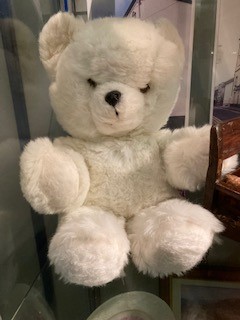 This handsome white teddy bear is one of our most recent acquisitions. He is a very special bear as he was manufactured at none other than our very own Lefrays factory at Aberbeeg. Not only that but his owner, Mrs Brenda Hartwell from Cwmtillery actually worked at the Lefrays factory. He was brought in to us in January by Mrs Hartwell’s son-in-law, Gordon Hendry. The Lefrays brand started life in 1948 in London before moving to Hertfordshire in 1960. In 1969 they relocated again to Aberbeeg. I have been unable to ascertain when the factory at Aberbeeg closed; if any readers know perhaps they could get in touch? In the meantime you will find Teddy in our New Acquisitions case just inside the museum entrance. He’s waiting to say hello!
This handsome white teddy bear is one of our most recent acquisitions. He is a very special bear as he was manufactured at none other than our very own Lefrays factory at Aberbeeg. Not only that but his owner, Mrs Brenda Hartwell from Cwmtillery actually worked at the Lefrays factory. He was brought in to us in January by Mrs Hartwell’s son-in-law, Gordon Hendry. The Lefrays brand started life in 1948 in London before moving to Hertfordshire in 1960. In 1969 they relocated again to Aberbeeg. I have been unable to ascertain when the factory at Aberbeeg closed; if any readers know perhaps they could get in touch? In the meantime you will find Teddy in our New Acquisitions case just inside the museum entrance. He’s waiting to say hello!
Crazy Golf
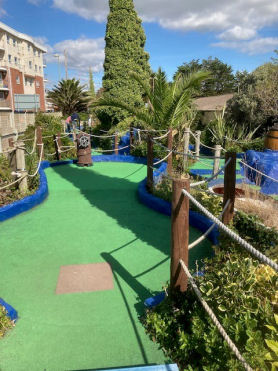 Crazy golf, miniature-golf, mini-putt, call it what you will; even if you’re not into sport, who doesn’t love a game? The idea obviously is to navigate the obstacles, in as few strokes as possible. These days they are big business but where did it all begin?...
Crazy golf, miniature-golf, mini-putt, call it what you will; even if you’re not into sport, who doesn’t love a game? The idea obviously is to navigate the obstacles, in as few strokes as possible. These days they are big business but where did it all begin?...
Mini-golf is thought to have started in 1867 in Scotland at the famous St Andrews Golf Course. While their husbands played golf, the ‘golf widows’ also wanted to pass the time and so a short 9 hole ‘mini course’ was laid out for them But the earliest record of what we now refer to as ‘crazy golf’ dates back to 1912 when an article appeared in The Illustrated London News talking of a new concept in golf which it called ‘Golfstacle’; a mini golf course made using carpet rather than grass and incorporating obstacles for the golfer to navigate through. The very first crazy golf course though is thought to be the Thistle Dhu built in North Carolina in 1916.
But the father of the obstacle ‘crazy golf’ that we know and love today, is considered to be an American by the name of Garnet Carter. Carter owned a hotel on Lookout Mountain in Georgia called the Fairyland Inn 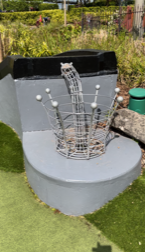 and in 1927 he opened a mini golf course in the grounds. In keeping with the theme of his hotel, as well as using bends and mounds, he used obstacles such as gnomes and hollowed out tree trunks and called it ‘Tom Thumb Golf’ and it quickly became a fad. Within just a few years there were thousands of ‘Tom Thumb’ courses all over the USA, with the patent owned by Carter. These mini golf courses needed very little space and thanks to the development of an artificial green by Thomas McCullough Fairbairn, by the late 1920s, they were springing up everywhere including on rooftops with 150 rooftop courses in New York alone. Sadly the American depression in the early 1930s saw most of these courses close but in 1938 Joseph and Robert Taylor of New York started building new mini-golf courses with much more interesting obstacles such as windmills and castles and quickly found orders for their courses pouring in.
and in 1927 he opened a mini golf course in the grounds. In keeping with the theme of his hotel, as well as using bends and mounds, he used obstacles such as gnomes and hollowed out tree trunks and called it ‘Tom Thumb Golf’ and it quickly became a fad. Within just a few years there were thousands of ‘Tom Thumb’ courses all over the USA, with the patent owned by Carter. These mini golf courses needed very little space and thanks to the development of an artificial green by Thomas McCullough Fairbairn, by the late 1920s, they were springing up everywhere including on rooftops with 150 rooftop courses in New York alone. Sadly the American depression in the early 1930s saw most of these courses close but in 1938 Joseph and Robert Taylor of New York started building new mini-golf courses with much more interesting obstacles such as windmills and castles and quickly found orders for their courses pouring in.
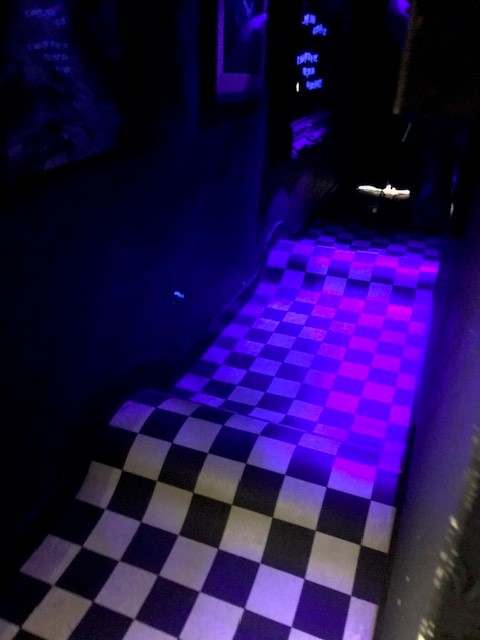 As a child growing up in the 60s and 70s, crazy golf was something I associated with seaside holidays and indeed they are still to be found on many seafronts but nowadays they can be found everywhere. Many theme parks have their own bespoke courses such as Alton Towers ‘Extraordinaire Golf’ with their two 9-hole courses themed to attractions found at the park such as this one pictured here themed to the rollercoaster ‘Oblivion’.
As a child growing up in the 60s and 70s, crazy golf was something I associated with seaside holidays and indeed they are still to be found on many seafronts but nowadays they can be found everywhere. Many theme parks have their own bespoke courses such as Alton Towers ‘Extraordinaire Golf’ with their two 9-hole courses themed to attractions found at the park such as this one pictured here themed to the rollercoaster ‘Oblivion’.
While most courses are still to be found outdoors, there are many to be found indoors such as the unique ‘The Hole in Wand’ within a café in York city centre (themed on a certain well known wizard) and these days they are interactive too meaning take your shot and see what happens! Too dark to see the hole? Cast a spell and turn the lights on! A drinkable ‘Potion’ is your reward for completing this course.
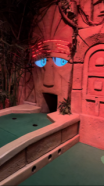 But one of the best I’ve come across is much closer to home; right in the heart of Cardiff’s city centre shopping centre. Located on floor three of the St David’s 2 multi-storey car park (yes that’s right; car park) is the Treetops Adventure Golf where you will find not one but two 18-hole interactive courses with a Caribbean theme. It’s so well themed that as you play you will hear the patter of rain along with rolls of thunder and flashes of lightning. With 36 holes to play, all under cover, expect the unexpected and you can even take a break between courses and have a pot of tea at the reasonably priced and equally well themed café; indeed even the toilets have a Caribbean theme!
But one of the best I’ve come across is much closer to home; right in the heart of Cardiff’s city centre shopping centre. Located on floor three of the St David’s 2 multi-storey car park (yes that’s right; car park) is the Treetops Adventure Golf where you will find not one but two 18-hole interactive courses with a Caribbean theme. It’s so well themed that as you play you will hear the patter of rain along with rolls of thunder and flashes of lightning. With 36 holes to play, all under cover, expect the unexpected and you can even take a break between courses and have a pot of tea at the reasonably priced and equally well themed café; indeed even the toilets have a Caribbean theme!
And with Legoland Windsor opening their brand new (Lego themed naturally) all-weather indoor triple golf course this spring, it looks like the craze for crazy golf is showing no signs of abating.
Sally Murphy
Gretna Green Old Blacksmiths
When you hear the words Gretna Green what do you think of...the place to run away to get married?
Gretna Green is situated in the southern council area of Dumfries and Galloway on the Scottish side of the border as defined by the small river Sark that runs into the Solway Firth. It became the place for young sweethearts to run away to when, in 1754, Lord Hardwicke passed a law that it was illegal to marry in England and Wales under the age of 16 without parental consent. So youngsters in love would run away to Scotland to marry and the first destination they were drawn to was the light from the burning forge of the Blacksmiths at Gretna shining like a beacon drawing them in. The law stated that you needed two witnesses and the assurance from the couple wanting to marry that they were both free to do so. This led to the blacksmiths who, at that time, were classed as ‘anvil priests’ to marry all that fled to their homestead.
One of the oldest certificates found dates to 11th June 1772 and belongs to a Mr Houston who was the proprietor of the Old Blacksmiths at that time while one of the last ‘Anvil Priests’ was a Mr Rennison (1920-1940) who married 5147 couples over the anvil! These weddings caused a lot of complaints and were considered scandalous and immoral amongst the people of the church and many stories have been told over the years of parents in carriages, horseback and even armed with guns chasing over the border to stop a marriage of their runaway children. In 1857 a new law was passed stating that anyone wishing to marry had to be a resident of that parish for 21 days prior to the marriage, and now I believe to get married here you have to give 29 days’ notice for the legal documentation to be drawn and cleared for the marriage schedule.
On 27th February 2023 marriage age in England and Wales rose to 18 regardless of parental consent in order to try and prevent forced marriages. In Scotland all anvil marriages were made illegal in 1940 but many still go to Gretna Green where you can be 16 to wed without parental consent but the ceremony must take place in a church, registry office or place with a licence to perform marriage ceremonies. Many couples still go to the Old Blacksmiths marriage room to repeat the traditional Scottish Oath after their legal marriage. Today you can visit the marriage room, and then wander through the coach museum and go to the gift shop or coffee house. And now there is a tourist information centre as well as an Arts and Craft gallery where you can watch craftsmen at work.
Interestingly the Blacksmiths shop has been in the Mackie-Houston family since 1885 with its 4th generation Alasdar Houston MBE DL FRagS running the attraction along with his sister Susan and it is now classed as a 5star world famous tourist attraction...so if you’re ever up that way drop in for a wander around!
Karen Pratley
Abertillery Orpheus Choir
My husband Alan treated himself to a record player during the Covid isolation period so he could play his 60s LPs. So now when we go into a charity shop we head for the LPs Section. So imagine our surprise to see this LP in one of the charity shops in Swansea. I wonder does anyone remember recording this? We had to buy it. Well done Abertillery Orpheus Choir. Your fame has travelled!
Judith Williams, Swansea.
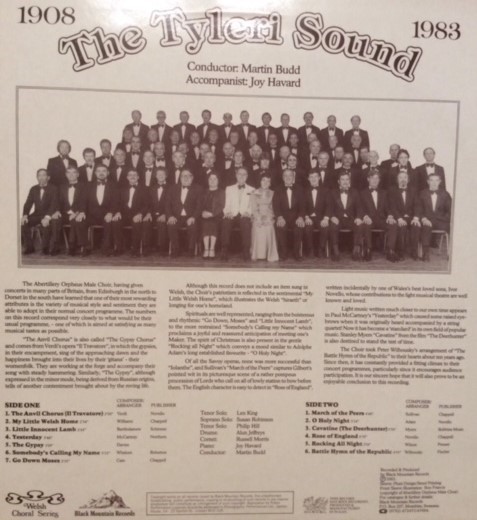
Editor’s note. Many thanks for this Judith. I know there will be at least one person reading this who will remember it being recorded and that is Mrs Chris Budd, widow of the conductor Martin Budd pictured here in white.
Llanhilleth’s Playhouse Cinema
Kelly’s Directory of Monmouthshire 1901 tells you that Llanhilleth is a small parish on the Western Valley’s section of the Great Western railway... I wonder what it looked like back in 1901! Even now the Llanhilleth I grew up in from the 1960’s to present day has changed so much and sadly, in my mind not for the best reasons. The iconic buildings that made Llanhilleth are slowly being demolished in the name of progress and the main road that was full of thriving shops has very little to offer these days.
At the top of the hill heading towards the Horseshoe Bend stand with your back to the Top Hotel (that is no longer a public house) and look towards the Chinese Takeaway – the derelict piece of ground overgrown with trees now was once the Playhouse Theatre and later cinema and bingo hall! Hard to believe to those of a younger generation who never knew about it! I knew this building very well as until I was around 4 years of age it was the home of my grandparents Tilly and Roy Newcombe who were caretakers of the Playhouse from around 1950 until it was closed.
It was built in 1909 and eventually opened towards the end of 1910, originally planned to be called The Hippodrome but called The Playhouse and proved to be quite a task in its construction. Not only finding a suitable spot for the build in a mining valley full of tunnels underground due to extraction of coal but it was also needing to be in the town centre. A suitable spot at the top of the hill on bedrock was found and after blasting the rock and building a solid construction, it was expected to last forever. Even though electricity was new to Llanhilleth a generator was installed in the basement for all the lighting of a grand theatre.
It proved to be very popular with live shows, touring plays, school productions and even opera productions with the Workman’s Institute nearby being used for screening the popular films of the day. As sound films reached the valleys by 1930 projection equipment with sound was installed for the new films of the day but live shows still were popular. With the introduction of television into homes by the 1960’s the Playhouse became the Bingo hall as people travelled further to see cinemas with a choice of films and bigger screens.
Then cracks started to appear in walls at the back of the building and further investigation found the building was becoming unsafe due to subsidence from mining shafts below the construction affecting the foundation. It was closed and my grandparents moved to a council house in Swyfryd...soon after the Playhouse was demolished and forgotten.
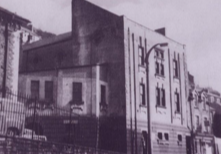
My memories are of the big doors leading up to stairs with the ticket office to the left side and the doors into the main seating area to the right. Continue up the stairs and a door to the left that was once for the special seats in the box and to get back stage – was my grandparents kitchen and living rooms....down the back to the former dressing rooms that became the bedrooms. You could go up from there to the auditorium or out of the side door to the passage to the main road. Back to the main stairs and up another flight were the ladies toilets on your left. Continue up the stairs to the balcony and you would find the posh seats with a great view of the stage! Behind was the projection room where I went very often with my grandfather. To me the building (photo below is courtesy of my mother) was huge and so very exciting to explore even at such a young age. Have you any memories of the Playhouse?
Karen Pratley
Top Of Page
© Abertillery & District Museum 2023 